The Importance of Good Materials
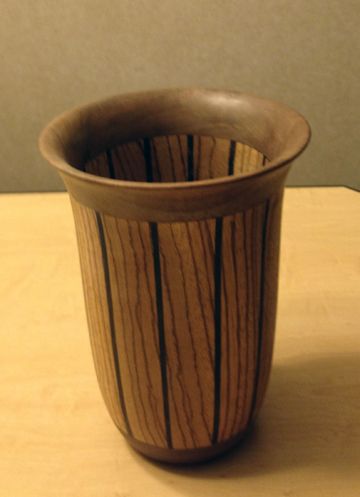
My favorite vessel, made from zebrawood staves, ebony strips, and claro walnut.
More on Turning

A Basic Tool Kit for Turners ![]()
Lathe Scraper Basics: Perfectly Flat Surfaces
How to Turn a Tapered Shaker Leg
Lately, I’ve been trying some segmented turnings. Nothing very elaborate, like the amazing pieces that Malcolm Tibbets turns out regularly, but some fairly simple bowls and vessels made with glued-up staves or rings.
Art Breese’s article in FWW #228 was a goldmine of good tips and techniques, and I recommend it to anyone who wants to try this kind of woodturning.
Rather than use yellow glue to assemble the pieces, I’ve been using a new cyanoacrylate called Nexabond 2500. Asa Christiana wrote about it in his coverage of this year’s AWFS show. Full disclosure: The company that makes Nexabond hired me to demonstrate woodturning.
I’m happiest with a vessel shown in the photo above. It’s made from zebrawood, ebony, and claro walnut. To my eye, the zebrawood’s pronounced grain accentuates the height of the vessel, and the ebony strips help accentuate the zebrawood. The dark chocolate brown walnut goes well with the zebrawood, I think.
My one segmented-turning failure began as an homage to the late Rude Osolnik, one of the giants of woodturning in the U.S. As the story goes, when Osolnik began his career he was too poor to buy wood, so he scrounged offcuts from local cabinet shops. One of the first turned pieces I ever laid eyes on was a vessel he turned from plywood scraps. He had oriented the plies vertically, so that when he turned the piece round the plies created a strong pattern. It blew me away, and I had always wanted to try his technique myself.
I had my chance at AWFS, but the homage turned into a disaster. My big mistake was using inexpensive plywood from a big-box store. About half-way into the turning, a large chunk flew off. I glued it back on and kept turning. Then another chunk flew off. So I glued that one back in place. After the fourth piece came loose, I gave up. Fortunately, those flying chunks of plywood never hit anyone. And it was the adhesive in the plywood that kept giving way, not the Nexabond 2500 that I used. You can see the disaster in the photo above.
So I wised up and got a better grade of plywood. At the Fine Woodworking Live event, I turned a small weed pot from a glued-up plywood blank. See the photos above. This time, everything held together. I finally got to pay proper homage to Rude Osolnik.
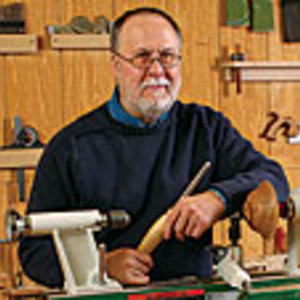
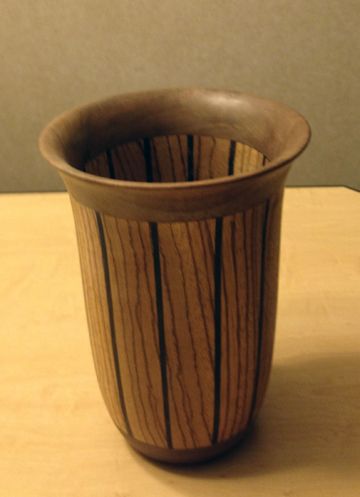

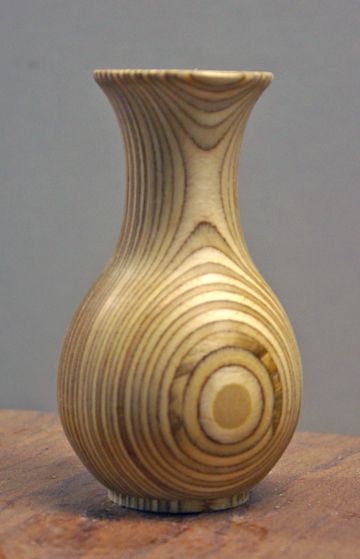
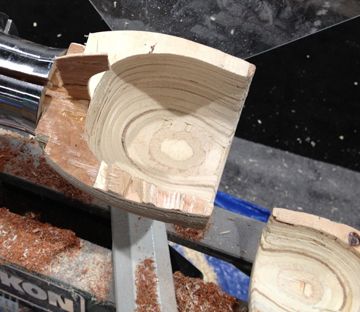





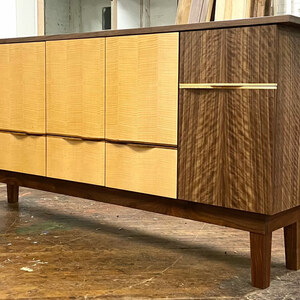












Comments
I'm having the same problem of poorly glued plys with birch plywood from both a big box store and a local cabinet lumberyard. If you flex a piece of the plywood, most of the plys barely pretend to be glued. Bunch of junk and since I'm beginning a large cabinetry project, I've got to hunt down some better plywood somewhere. Very disappointing.
I haven't tried turning plywood yet but I buy my plywood for cabinets from a local wholesaler.
There, I have the option of buying 'Import' or 'Domestic'. I have purchased 'Import' in the past and didn't have too many issues. I did notice that the invoice stated that there was no warranty for delamination.
I have switched for two reasons to Domestic. One, it is a better quality product overall and two, it supports people working in mills here in Canada and the US as opposed to overseas (read:China)
When working at local lumberyards(20 years), we would purchase plywood from the suppliers based on price. Actual 'grades' didn't come in to play. They just call them Good One Side (G1S) or G2S... which is usually graded C-2 or B-1 respectively. If you want the good stuff- avoid the box stores.
p.s.
Nice looking turnings, David!
I have turned 'microlam' manufactured lumber with good results. The micolam uses adhesives suitable for high strength products, such as wooden I-beam trusses.
Log in or create an account to post a comment.
Sign up Log in